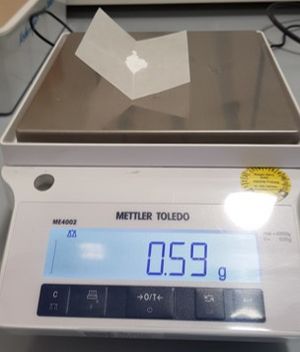Pressing green bodies
Pressing green bodies is an essential step of ceramic processing. As powder is being handled, make sure to wear PPE and use a hood whereever possible.
Contents
Powder properties for good pressing
Pressing green bodies does not work equally well for all ceramic powders. Very coarse powders tend not to give a mechanically stable green body, and very fine powders are difficult to handle due to their low tapping density. Powders with a particle size of 0.5-3µm are generally easiest to press into green bodies. It might be required to add a binder to assure a good mechanical stability of the green body. In this case, remember to remove the binder before sintering by a thermal treatment at 600-800°C in oxidizing atmosphere.
Quantity of powder
To obtain a given size of the green body after pressing, the amount of powder needs to be approximated. This requires knowledge of the green density and the density of the material itself.
Calculate the Volume of the required green body. Multiply with the green density and the density of the ceramic material itself. the result is the amount of powder required for pressing the green body.
Filling the Die
First, the die should be cleaned carefully to prevent contaminations and to assure that no powder particles are squeezed between the die and punches.
The lower punch is put into the die. The desired amount of powder is weighted on paper and filled into the die. Make sure to evenly distribute the powder within the die, e.g. by shaking. Insert upper punch.
Selecting the right pressure
-smaller particles require more pressure -if subsequently, cold-isostatic pressing is used, the pressure during axial pressing should be selected as low as possible to prevent fracture of the green body -a sign of too high pressure is a lens-like fracture of the top and/or bottom surface of the green body


